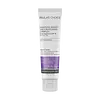What's inside
What's inside
 Key Ingredients
Key Ingredients

 Benefits
Benefits

 Concerns
Concerns

 Ingredients Side-by-side
Ingredients Side-by-side

Water
Skin ConditioningAlcohol Denat.
AntimicrobialOctocrylene
UV AbsorberC12-15 Alkyl Benzoate
AntimicrobialButyl Methoxydibenzoylmethane
UV AbsorberDibutyl Adipate
EmollientTalc
AbrasiveBis-Ethylhexyloxyphenol Methoxyphenyl Triazine
Skin ConditioningCyclopentasiloxane
EmollientTromethamine
BufferingCyclohexasiloxane
EmollientAmmonium Acryloyldimethyltaurate/Vp Copolymer
Cellulose
AbsorbentMethylene Bis-Benzotriazolyl Tetramethylbutylphenol
UV FilterPhenylbenzimidazole Sulfonic Acid
UV AbsorberPolymethylsilsesquioxane
Polyacrylamide
PEG-40 Hydrogenated Castor Oil
EmulsifyingC13-14 Isoparaffin
EmollientCarbomer
Emulsion StabilisingPanthenol
Skin ConditioningTocopheryl Acetate
AntioxidantParfum
MaskingDecyl Glucoside
CleansingXanthan Gum
EmulsifyingAcrylates/C10-30 Alkyl Acrylate Crosspolymer
Emulsion StabilisingDisodium EDTA
Laureth-7
EmulsifyingBHT
AntioxidantSodium Lauroyl Glutamate
Linalool
PerfumingLysine
Skin ConditioningPropylene Glycol
HumectantMagnesium Chloride
Water, Alcohol Denat., Octocrylene, C12-15 Alkyl Benzoate, Butyl Methoxydibenzoylmethane, Dibutyl Adipate, Talc, Bis-Ethylhexyloxyphenol Methoxyphenyl Triazine, Cyclopentasiloxane, Tromethamine, Cyclohexasiloxane, Ammonium Acryloyldimethyltaurate/Vp Copolymer, Cellulose, Methylene Bis-Benzotriazolyl Tetramethylbutylphenol, Phenylbenzimidazole Sulfonic Acid, Polymethylsilsesquioxane, Polyacrylamide, PEG-40 Hydrogenated Castor Oil, C13-14 Isoparaffin, Carbomer, Panthenol, Tocopheryl Acetate, Parfum, Decyl Glucoside, Xanthan Gum, Acrylates/C10-30 Alkyl Acrylate Crosspolymer, Disodium EDTA, Laureth-7, BHT, Sodium Lauroyl Glutamate, Linalool, Lysine, Propylene Glycol, Magnesium Chloride
Butyl Methoxydibenzoylmethane
UV AbsorberHomosalate
Skin ConditioningEthylhexyl Salicylate
UV AbsorberOctocrylene
UV AbsorberBenzophenone-3
UV AbsorberWater
Skin ConditioningC12-15 Alkyl Benzoate
AntimicrobialButylene Glycol
HumectantVp/Eicosene Copolymer
Sodium Cetearyl Sulfate
CleansingCetearyl Alcohol
EmollientDimethicone
EmollientGlyceryl Stearate
EmollientMethyl Glucose Sesquistearate
EmollientSodium Ascorbyl Phosphate
AntioxidantRetinyl Palmitate
Skin ConditioningTocopheryl Acetate
AntioxidantTocopherol
AntioxidantPicea Abies Wood Extract
Aloe Barbadensis Leaf Juice
Skin ConditioningTitanium Dioxide
Cosmetic ColorantBentonite
AbsorbentAcrylates/C10-30 Alkyl Acrylate Crosspolymer
Emulsion StabilisingEthylhexylglycerin
Skin ConditioningSodium Polyacrylate
AbsorbentDisodium EDTA
Sodium Hydroxide
BufferingPhenoxyethanol
PreservativeChlorphenesin
AntimicrobialButyl Methoxydibenzoylmethane, Homosalate, Ethylhexyl Salicylate, Octocrylene, Benzophenone-3, Water, C12-15 Alkyl Benzoate, Butylene Glycol, Vp/Eicosene Copolymer, Sodium Cetearyl Sulfate, Cetearyl Alcohol, Dimethicone, Glyceryl Stearate, Methyl Glucose Sesquistearate, Sodium Ascorbyl Phosphate, Retinyl Palmitate, Tocopheryl Acetate, Tocopherol, Picea Abies Wood Extract, Aloe Barbadensis Leaf Juice, Titanium Dioxide, Bentonite, Acrylates/C10-30 Alkyl Acrylate Crosspolymer, Ethylhexylglycerin, Sodium Polyacrylate, Disodium EDTA, Sodium Hydroxide, Phenoxyethanol, Chlorphenesin
 Reviews
Reviews

Ingredients Explained
These ingredients are found in both products.
Ingredients higher up in an ingredient list are typically present in a larger amount.
Acrylates/C10-30 Alkyl Acrylate Crosspolymer is a synthetic polymer. It is used to thicken and improve the texture of products. Due to its properties, it can prevent water and oil ingredients from separating.
Also known as Avobenzone, this ingredient is a chemical sunscreen filter that provides protection in the UV-A range.
Avobenzone is globally approved and is the most commonly used UV-A filter in the world.
Studies have found that avobenzone becomes ineffective when exposed to UV light (it is not photostable; meaning that it breaks down in sunlight). Because of this, formulations that include avobenzone will usually contain stabilizers such as octocrylene.
However, some modern formulations (looking at you, EU!) are able to stabilize avobenzone by coating the molecules.
Avobenzone does not protect against the UV-B range, so it's important to check that the sunscreen you're using contains other UV filters that do!
The highest concentration of avobenzone permitted is 3% in the US, and 5% in the EU.
Learn more about Butyl MethoxydibenzoylmethaneC12-15 Alkyl Benzoate is made up of Benzoic Acid and long chain alcohols. It has a low molecular weight.
C12-15 Alkyl Benzoate is an emollient and texture enhancer. Due to its solubility, it is often used in sunscreens to help evenly distribute active ingredients.
As an emollient, C12-15 Alkyl Benzoate helps soften and hydrate your skin. Emollients create a film on your skin that traps moisture within.
This ingredient has been reported to cause eye irritation.
Learn more about C12-15 Alkyl BenzoateDisodium EDTA plays a role in making products more stable by aiding other preservatives.
It is a chelating agent, meaning it neutralizes metal ions that may be found in a product.
Disodium EDTA is a salt of edetic acid and is found to be safe in cosmetic ingredients.
Learn more about Disodium EDTAOctocrylene protects skin from sun damage. It absorbs UV-B with peak absorption of 304 nm. It is a common sunscreen ingredient and often paired with avobenzone, a UVA filter. This is because octocrylene stabilizes other sunscreen ingredients by protecting them from degradation when exposed to sunlight. Octocrylene is a photostable ingredient and loses about 10% of SPF in 95 minutes.
Octocrylene also acts as an emollient, meaning it helps skin retain moisture and softens skin. It is oil-soluble and hydrophobic, enhancing water-resistant properties in a product.
Those who are using ketoprofen, a topical anti-inflammatory drug, may experience an allergic reaction when using octocrylene. It is best to speak with a healthcare professional about using sunscreens with octocrylene.
The EU allows a maximum of these concentrations:
Learn more about OctocryleneTocopheryl Acetate is AKA Vitamin E. It is an antioxidant and protects your skin from free radicals. Free radicals damage the skin by breaking down collagen.
One study found using Tocopheryl Acetate with Vitamin C decreased the number of sunburned cells.
Tocopheryl Acetate is commonly found in both skincare and dietary supplements.
Learn more about Tocopheryl AcetateWater. It's the most common cosmetic ingredient of all. You'll usually see it at the top of ingredient lists, meaning that it makes up the largest part of the product.
So why is it so popular? Water most often acts as a solvent - this means that it helps dissolve other ingredients into the formulation.
You'll also recognize water as that liquid we all need to stay alive. If you see this, drink a glass of water. Stay hydrated!
Learn more about Water